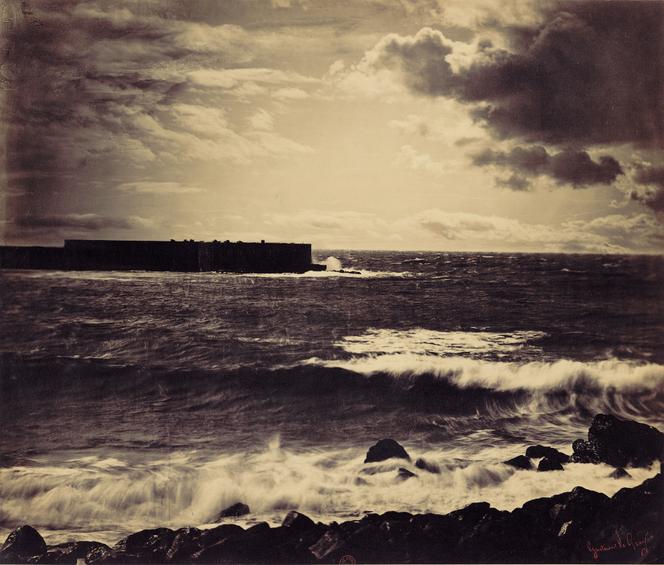


The exhibition "Noir & Blanc. Une esthétique de la photographie ('Black & White. An aesthetic of photography')" at the BNF is a revenant: scheduled for 2020, but canceled owing to the Covid-19 epidemic, it was installed at the Grand Palais in Paris, then taken down without the public having a chance to see it. Now it has returned, brought back to the BNF, as the Grand Palais is currently under renovation.
"Noir & Blanc. Une esthétique de la photographie" is above all an opportunity to revisit the BNF's photographic collections from their earliest days. And to bring many historic treasures out of storage, signed by great artists who have become masters of contrast and composition: Gustave Le Gray, Paul Strand, Frank Horvat, Bernard Plossu, Brassaï. This is a pleasure not to be missed, such are the splendors and immaculate prints on display: a near-black photograph by Harry Callahan with his wife emerging from the shadows, a landscape as if cut out with scissors by Pierre de Fenoÿl, a velvety shell by Edward Weston...
In this epic exhibition of over 300 photographs by 206 artists, arranged thematically rather than chronologically, the idea of the four BNF curators was to show how black and white, a non-choice initially made for technical or even economic reasons, later became an aesthetic choice and a vehicle for creativity. The introduction is quite successful. If we often imagine that black and white was born with photography, the exhibition quickly sets us straight.
In the 19th century, the first images took on brown, sepia, bistre and bluish hues. Le Gray's superb Grande Vague (1857) is neither black nor white, but rather chocolate and ivory. It was the gelatino-silver bromide print process, which dominated throughout the 20th century, that would set the tone for "true" black. As the catalog points out, the very term "black and white" for monochrome photography only came into use when color photography became popular in the 1930s, with processes such as Kodachrome – turning black and white into a real choice.

The rest of the exhibition explores this particular aesthetic and choice, highlighting what lovers of black and white cherished in this distinctive representation of the world: the ability to accentuate the contrast of objects, to emphasize composition, to make light palpable. Modernists, in particular, seized upon it to enhance the lines and geometric patterns that characterize the modern city, even to the point of abstraction – like Germaine Krull, who photographed bridges and the Eiffel Tower in her book Metal (1928).
You have 55% of this article left to read. The rest is for subscribers only.
